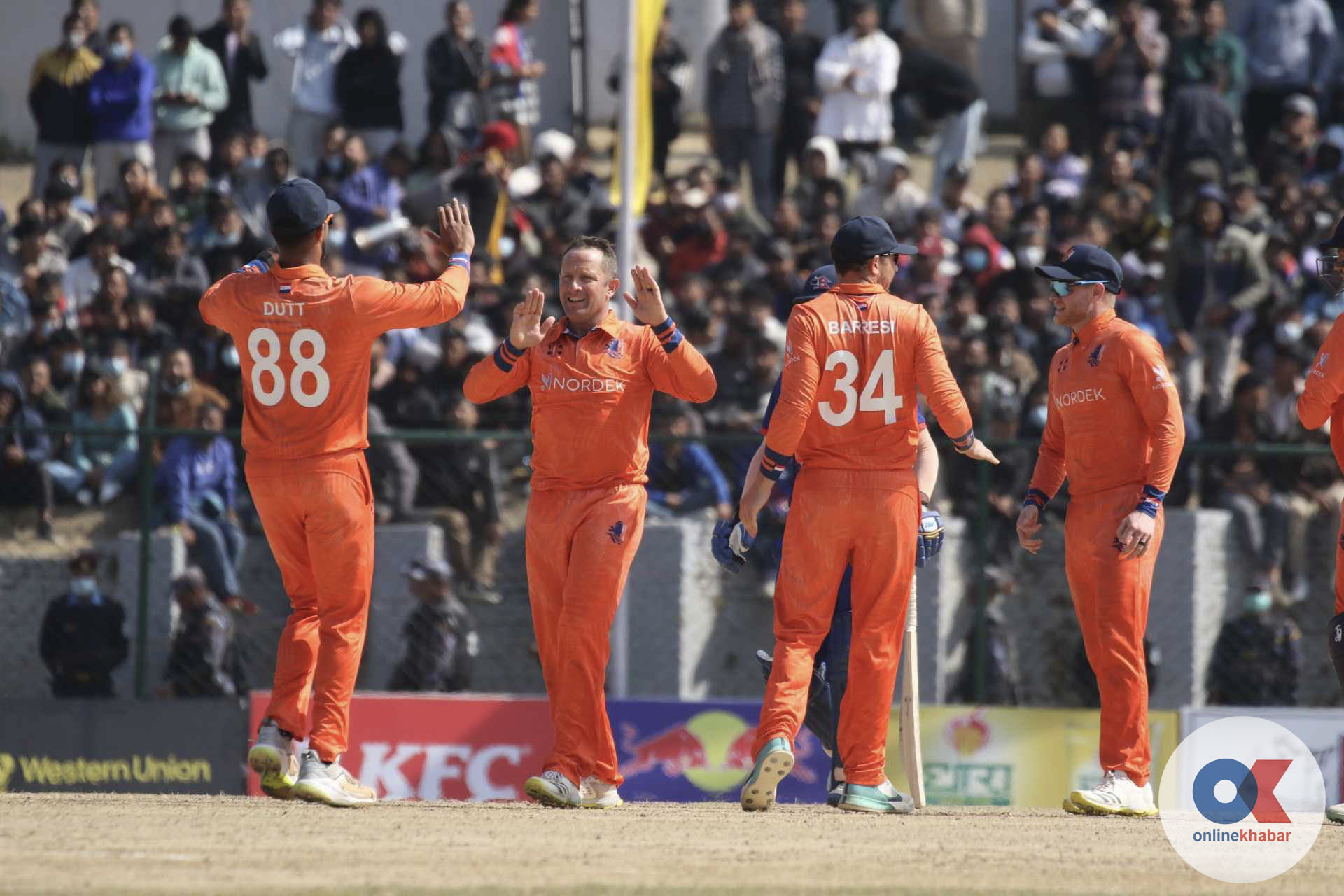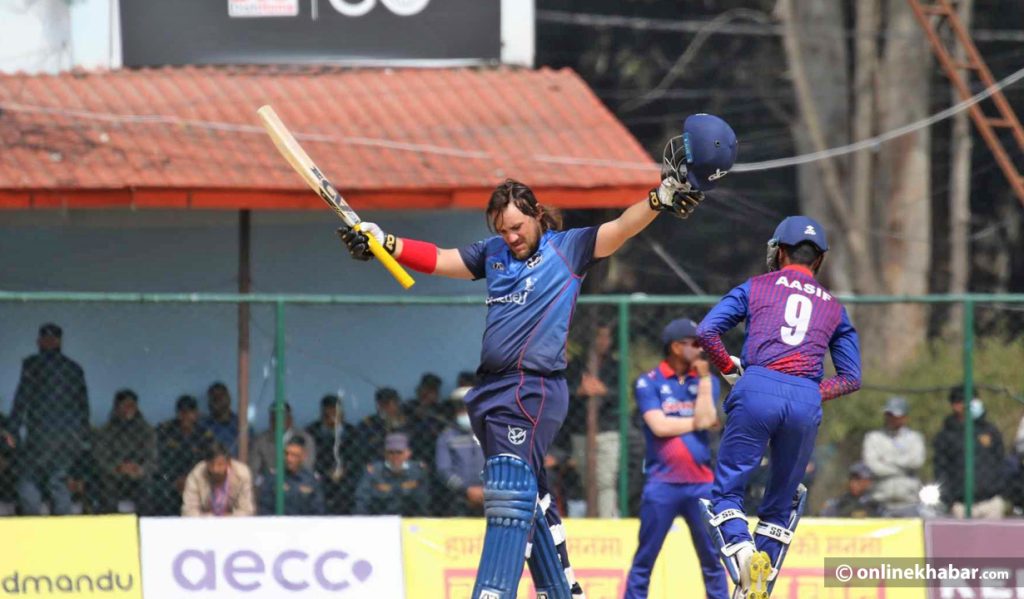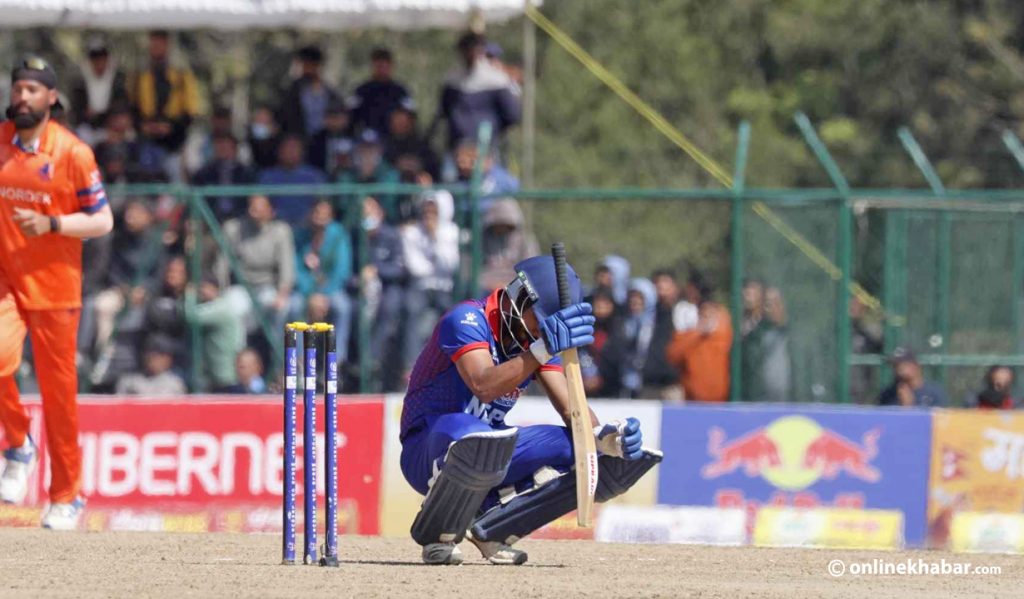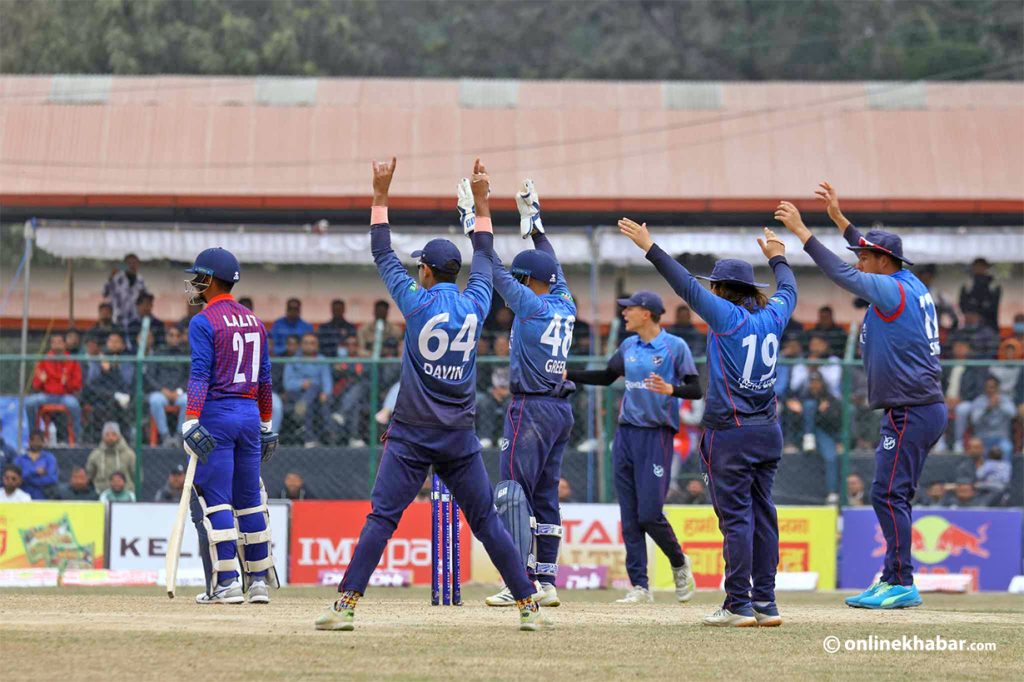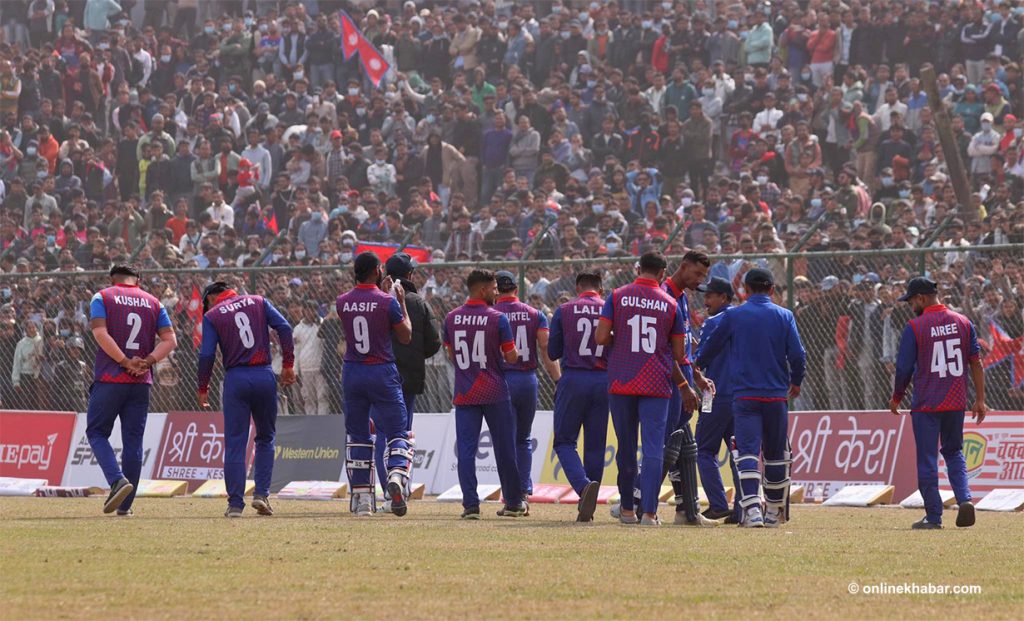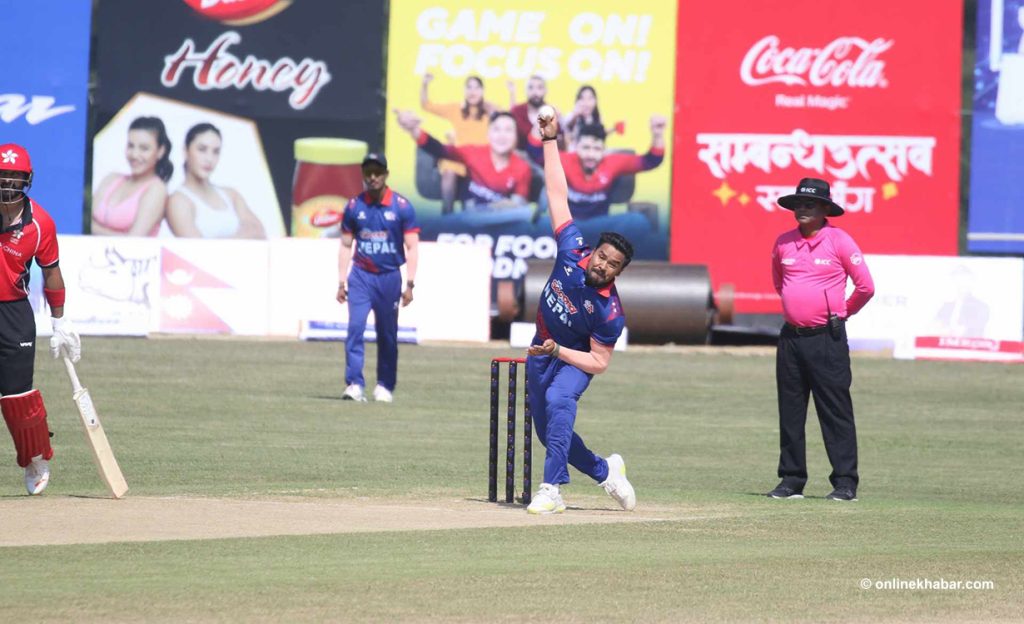
The stage was set at the TU Cricket Ground as Nepal took on their rivals the UAE in the final of the T20I Triangular Series. Coming in unbeaten in the series and at home over the past year, Nepal were the favourites.
The UAE, however, was determined to shake off their recent losses to Nepal. Having been defeated multiple times in the past year, they were eager to outperform their rivals. That is exactly what happened, as Nepal fell to the UAE by four wickets in a tightly contested match.
The T20I Triangular Series, featuring Nepal, Hong Kong and the UAE, acted like a warm-up tournament for the T20 World Cup Asia Qualifiers. These qualifiers will determine the associate team from Asia that will compete in the 2024 T20 World Cup in the USA and the West Indies.
Despite Nepal losing in the final, the team did get some exposure as they had not played T20I cricket against competitive teams for nearly two years. Nepal were good in the four group games against both Hong Kong and the UAE but the loss in the final might have raised some alarms as the team will have to win at least one knockout game to qualify for the 2024 T20 World Cup.
A look back
The T20I rivalry between Hong Kong and Nepal traces its roots back to 2012, with Nepal emerging as the dominant side, winning the majority of the matches. On the other hand, the rivalry between the UAE and Nepal has been longstanding, dating back to 2019. Before this series, the UAE had historically held the edge over Nepal in T20I encounters.
Nepal, however, have had a mental edge against the UAE as they have time and again beaten them over the past year along with the two games in the T20I Triangular Series.
The tournament highlighted Nepal’s much-anticipated dominance, with the hosts displaying exceptional form and advancing to the T20I Triangular Series finals undefeated. It was clear that Nepal were experimenting and testing their bench strength in the series prior to the 2024 T20 World Cup Asia Qualifier that starts on October 30 in Nepal.
Not all rosy
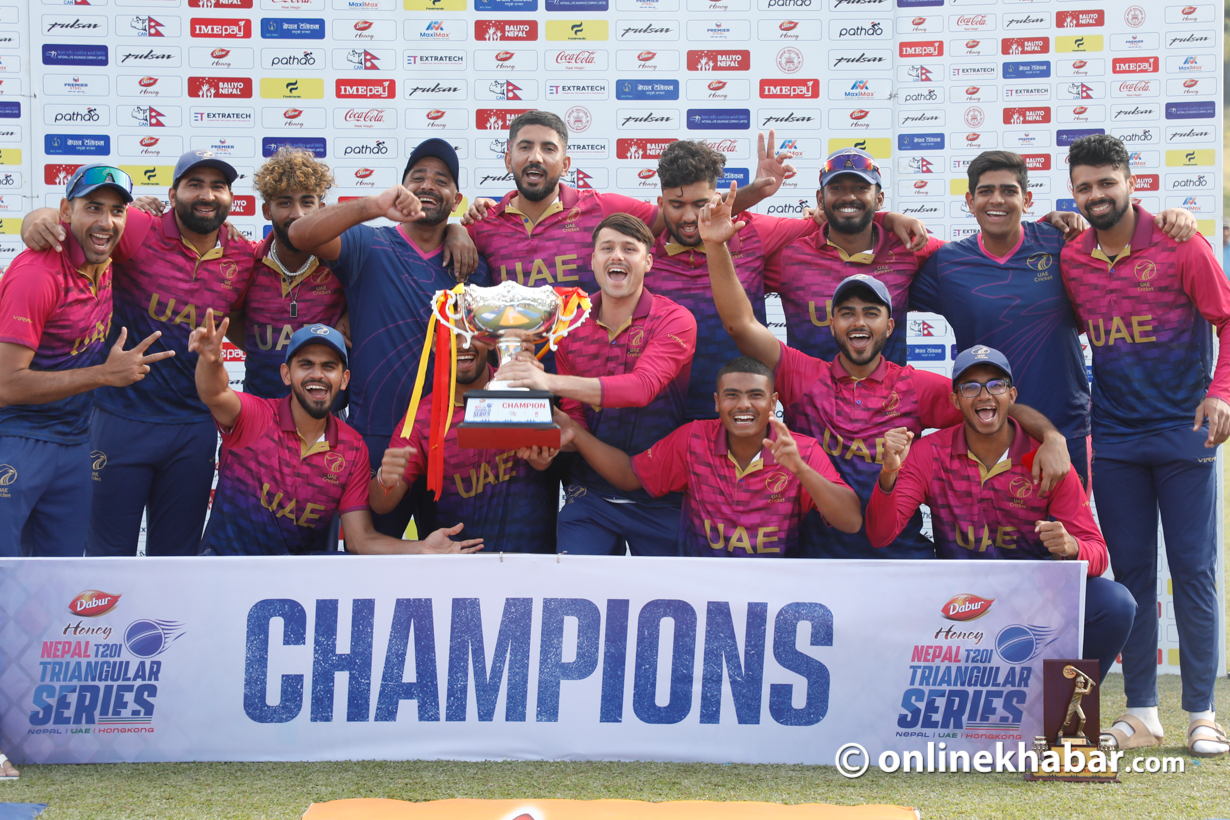
Despite reaching the final and narrowly losing to the UAE, Nepal’s performance underscores the need for improvement, as the T20I Triangular Series highlighted several pressing issues.
The inconsistency of opener Kushal Bhurtel and his struggle to convert promising starts were major concerns for Nepal. There was a strong sentiment in favour of establishing a stable batting lineup with minimal experimentation. While young Kushal Malla demonstrated aggressive gameplay, he struggled to put together a composed innings, except for a blazing 92 off 41 deliveries against Hong Kong. There was also a recognised need to explore options in pace bowling to lessen the team’s reliance on Karan KC and Sompal Kami.
The middle order of the team needs to step up if Nepal wishes to qualify and compete against the top teams in the US and the West Indies next year. Sandeep Lamichhane was absent from the tournament, taking some personal time off. His absence was notable as Nepal lacked a wicket-taking bowler in the middle part of the innings. His form, which has not been at its best, will be a crucial factor for Nepal’s success in the upcoming series.
Not all bad
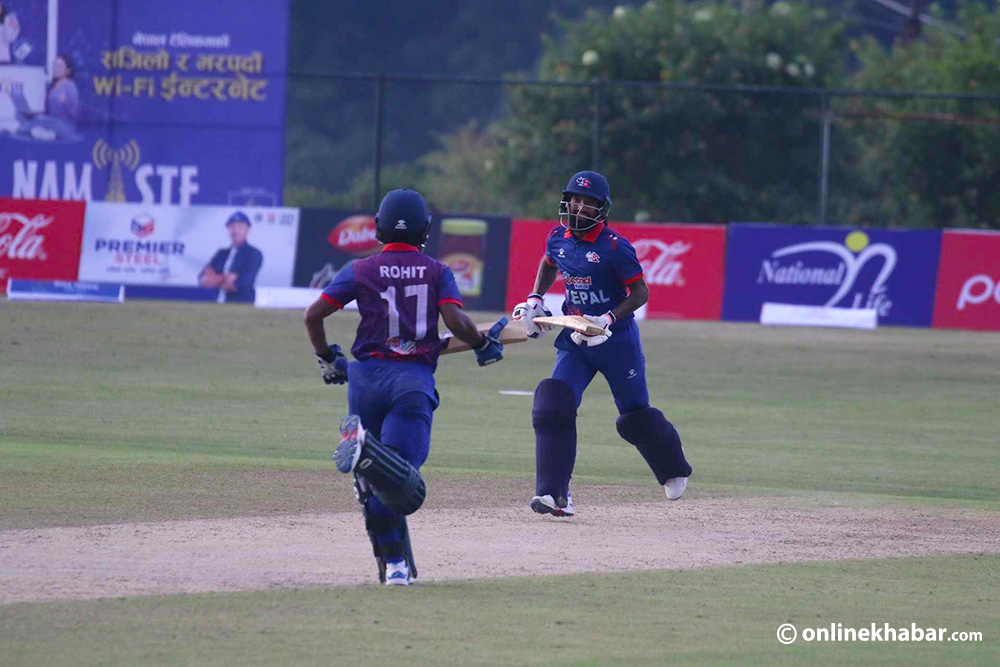
The tournament provided numerous positive takeaways for Nepal. With the qualifiers on the horizon, the outstanding form of all-rounder Dipendra Singh Airee was a standout. His performance in batting and fielding throughout the tournament significantly boosted the team’s overall confidence.
Lalit Rajbhanshi, the left-arm orthodox spinner, made a remarkable comeback, contributing to the improvement in the spin department. Nepal elevated its fielding standards with high-calibre catches and impressive efforts, showcasing a commendable display of skill and commitment.
Another notable highlight from the tournament was the performance of Nepal’s death bowling specialist, Abinash Bohora. His consistent and impactful deliveries at crucial moments, coupled with his skilful variations, showcased him as a promising asset in the pace lineup.
What next?
Tournaments and series like these play a vital role before regional qualifiers, as they bolster players’ confidence, refine their skills and abilities, and enable them to pinpoint and work on their areas of strength and weakness.
As expected, the tournament underscored challenges that require attention, strategies that need refinement, and squad stabilisation issues that demand immediate action. Moreover, many young players gained invaluable experience in the most daunting and demanding format of the game.
The T20I Triangular Series served as a valuable opportunity for teams to acclimate to the playing conditions. This effort was spearheaded by the Cricket Association of Nepal and Nepal’s head coach, Monty Desai, who organised the event in collaboration with the pitch curators, ensuring the venues were well-maintained and of high quality.
For emerging associate nations, arranging regular practice matches and tours can be a challenge. Thus, competitions like these play a crucial role in aiding players’ development. Additionally, excelling in this format can lead to international recognition, potentially opening doors to participate in major T20 tournaments such as the Indian Premier League (IPL), Big Bash League (BBL), and others. Consequently, players at the associate level stand to gain from these tournaments, including opportunities to attract sponsors, showcase their talents, and elevate their cricketing standards.
The T20I Triangular Series served as a valuable warm-up for Nepal. The team now has a clear understanding of what it takes to progress to the next level. To succeed, they will need to continue playing the high-quality cricket they have demonstrated since Desai took over as head coach. However, the question remains: can they maintain that level of play under the pressure of the home crowd? Only time will tell.





